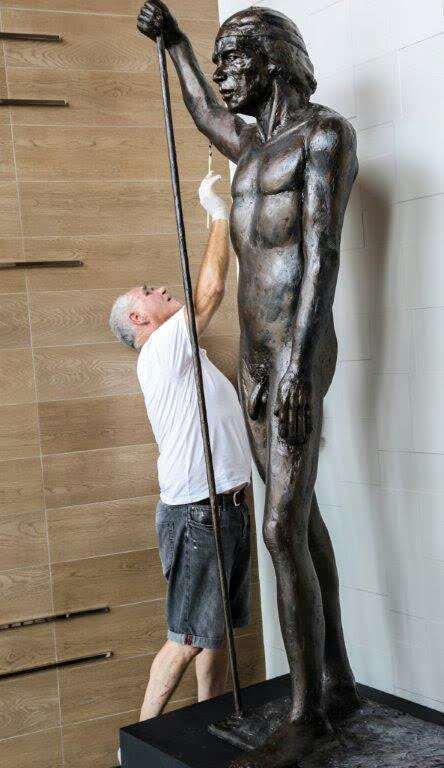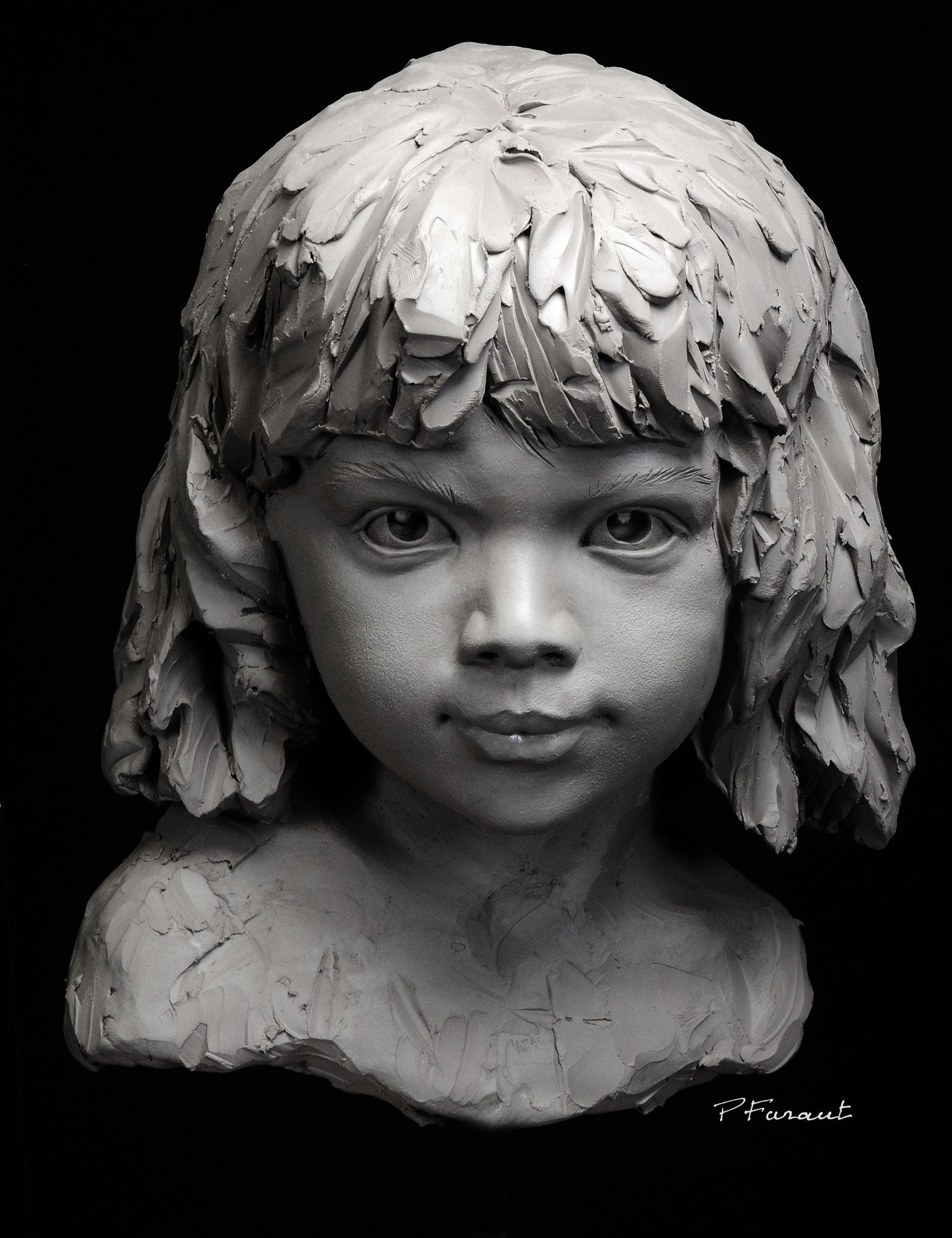The Influence of Nature in Sculpture Art
The influence of nature in sculpture art is a topic that has astounded artists throughout background. Meaning of natural components is one more means in which nature influences sculpture, as musicians imbue their developments with the meaning and organizations inherent in these components - Figurative Sculptures. Eventually, sculpture art has the power to catch the transience of nature, freezing a moment in time and allowing us to appreciate its beauty in perpetuity.
Organic Forms and Shapes
Organic forms and types, inspired by the unified frameworks and complex patterns discovered in nature, play an essential function in the realm of sculpture art. Sculptors have long been astounded by the elegance and intricacy of the natural world, locating ideas in the stylish curves of a seashell, the delicate flowers of a blossom, or the twisting branches of a tree. By imitating and extracting these natural types, artists are able to develop sculptures that stimulate a sense of harmony and equilibrium.
Among the reasons natural types and shapes are so prevalent in sculpture art is their capacity to get in touch with audiences on a deep emotional degree. The natural globe recognizes to us all, and when we see these kinds stood for in art, it elicits a feeling of comfort and acknowledgment. It advises us of our location in the grand plan of things and enables us to link with something above ourselves.
Additionally, natural forms and forms in sculpture art typically symbolize a feeling of motion and power. The streaming lines and vibrant structures mimic the continuous motion and growth located in nature. This produces a feeling of vitality and brings sculptures to life, making them look like if they could proceed to change and progress prior to our eyes.
Texture and Product Exploration
A considerable facet of sculpture art influenced naturally is the exploration of structure and products through the usage of various methods and mediums. Artists often attract ideas from the diverse structures discovered in the natural globe, such as the harsh bark of a tree, the smooth surface of a pebble, or the complex patterns on a fallen leave. By incorporating these structures right into their job, sculptors can produce a responsive experience for viewers, inviting them to engage with the art work on a sensory degree.
Texture can be achieved in sculpture with a range of approaches. Some artists choose to carve or shape straight right into the picked product, creating a three-dimensional surface that imitates the structures discovered in nature. Others might use strategies such as molding or casting to capture the details of organic textures. Additionally, artists may explore various products, such as timber, clay, metal, or stone, each providing its own distinct structure and visual appeal.
Material exploration is additionally a significant part of sculpture art influenced naturally. Musicians might venture into uncharted region, seeking out new materials that stimulate the significance of the all-natural world. For instance, they may integrate natural environments like branches, leaves, or even soil into their sculptures, blurring the limits in between art and the setting. Portrait Sculptor. By pressing the limits of standard products and methods, sculptors can create visually spectacular and conceptually rich works that celebrate the beauty and diversity of nature.
Symbolism of Natural Environments
The unification of natural environments in sculpture art adds a layer of symbolism and deepness to the art work. By using materials found in nature, artists have the ability to imbue their developments with significance that resonates with visitors on an extensive level. Natural environments such as timber, stone, and plants have actually been made use of throughout history to convey numerous symbolic messages.
Timber, for example, frequently stands for resilience, stamina, and growth. Sculptures crafted from this material can evoke a feeling of connection to the earth and the cycles of life. Rock, on the various other hand, is commonly connected with permanence and endurance. Sculptures carved from stone can signify the ageless nature of certain concepts or concepts.
Plants and blossoms are additionally frequently included into sculpture art, standing for motifs of revival, beauty, and development. The fragile petals and dynamic shades of blossoms can evoke feelings of joy, while the intertwining branches of plants can signify interconnectedness and unity.
Along with these natural materials, carvers might also use natural environments such as wind, water, or fire to further improve the symbolic message of their art work. These components can stand for the transformative power of nature, the flow of time, or the forces that shape our world.

Reflections of the Setting
Reflections of the Atmosphere can be seen in sculpture art via the consolidation of natural environments and the portrayal of eco-friendly themes. Carvers usually draw motivation from the setting, using materials such as timber, rock, and even recycled materials to produce their art work. By using these natural aspects, they not just pay tribute to the environment however likewise develop a more powerful connection between the artwork and its surroundings.
Along with the products made use of, sculpture art also reflects the atmosphere with the representation of eco-friendly motifs. Many sculptors select to illustrate pets, plants, or landscapes in their job, highlighting the elegance and delicacy of the environment. These sculptures work as reminders of the importance of protecting our setting and the need for sustainable techniques.

Moreover, ecological sculptures frequently aim to increase understanding about pushing environmental issues. They work as aesthetic depictions of the effect of human tasks on the atmosphere, such as climate, logging, or contamination change. By showing these concerns in their artwork, sculptors want to motivate visitors to act and come to be much more conscious of their very own environmental footprint.
Catching the Transience of Nature
Sculpture musicians additionally discover the impact of nature by skillfully catching the ephemeral and ever-changing elements of the natural world. With their creativity, these musicians aim to illustrate the short lived appeal and transience of nature, evoking a sense of marvel and consideration in viewers.
One method which sculpture artists record the transience of nature is by making use of products that are themselves based on degeneration and modification. For instance, musicians might choose to work with organic materials such as leaves, blossoms, or timber, which normally deteriorate with time. This calculated option highlights the brevity of nature and advises us of the unpreventable cycle of life and death.
In addition, sculpture musicians frequently use methods that develop a sense of movement and fluidness in their job. By incorporating flowing lines Contemporary Sculptures and dynamic kinds, they share the ever-changing nature of the environment. This can be seen in sculptures influenced by wind, water, or the growth of plants, where the artist seeks to capture the essence of continuous movement and change.
Moreover, some musicians select to produce site-specific or short-term installments that connect with the atmosphere. These ephemeral sculptures, made from materials such as ice, light, or sand, are intentionally made to progressively vanish or transform with time. By welcoming the transient nature of their creations, musicians invite customers to review the fleeting elegance of the all-natural globe and the impermanence of human presence.

Verdict
In verdict, nature has an extensive impact on sculpture art (Robert C Hitchcock Sculptor). Appearance and material exploration further enhance the connection to nature, as artists typically integrate natural products right into their sculptures.
Meaning of natural elements is an additional method in which nature influences sculpture, as artists imbue their productions with the meaning and associations inherent in these components.A considerable element of sculpture art influenced by nature is the exploration of structure and products with the usage of different methods and tools (Portrait Sculptor).Product exploration is additionally a substantial component of sculpture art affected by nature.One means in which sculpture musicians record the transience of nature is by utilizing materials that are themselves subject to degeneration and adjustment. Structure and material expedition further improve the connection to nature, as musicians frequently integrate natural materials right into their sculptures